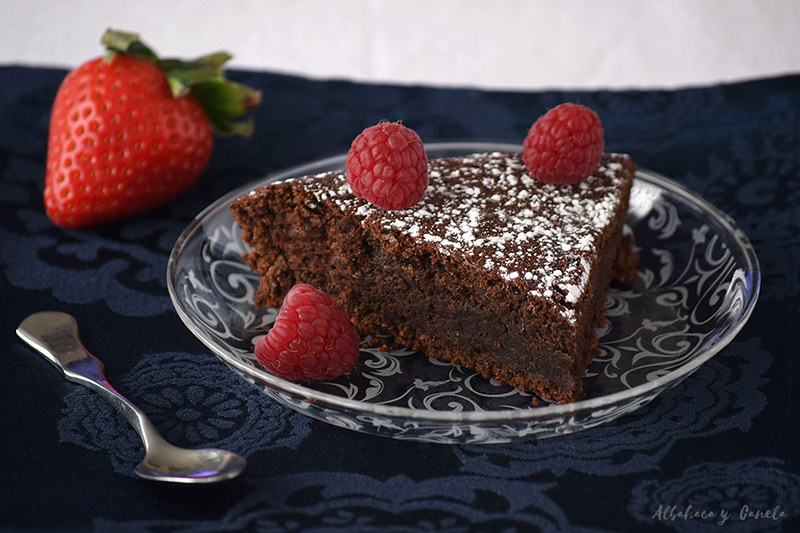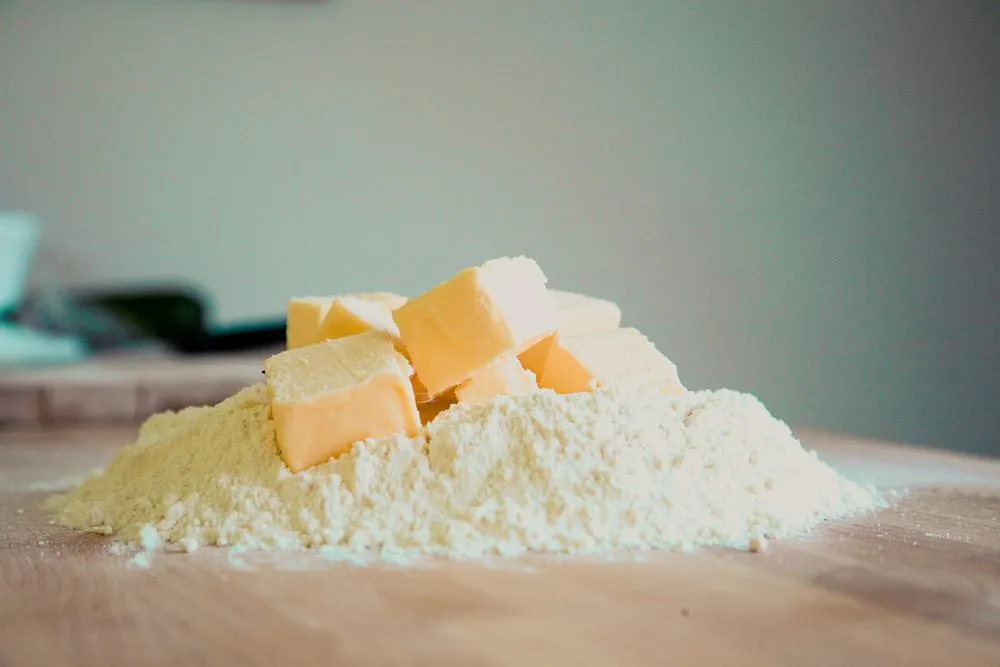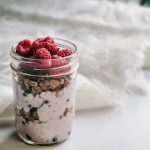The Best Fluffy Pancakes recipe you will fall in love with. Full of tips and tricks to help you make the best pancakes.
Mornings can be hectic, and finding a breakfast that’s both quick and delicious often feels like a challenge. But with Kirkland breakfast sandwiches, you can have the best of both worlds. These pre-made, frozen sandwiches offer a convenient and affordable solution for busy mornings without sacrificing taste or quality. Whether you’re rushing to get out the door or simply craving a comforting breakfast at home, Kirkland’s signature sandwiches are the perfect go-to.
Packed with hearty ingredients like eggs, cheese, and savory meats, these sandwiches are as customizable as they are tasty. Plus, they make meal prep a breeze, so you can enjoy a fresh, satisfying breakfast every day of the week. In this post, we’ll explore how to make the most of your Kirkland breakfast sandwiches with easy recipes, creative twists, and tips for a perfectly satisfying morning meal. Get ready to start your day off right!
What is Gluten-Free Cake Flour and How Does It Work?
What Makes Cake Flour Different from All-Purpose Flour?

Cake flour is a finely milled flour made from soft wheat varieties that contain less protein than all-purpose flour. This low protein content helps create a delicate, tender texture in cakes, making them light and fluffy. The fine grind of cake flour is also important because it contributes to a smoother batter, which is key to the soft crumb that most cake recipes call for.
Traditional cake flour is used in recipes that require a soft, airy structure, such as angel food cakes, sponge cakes, and layered cakes. It allows the cake to rise and set properly without becoming too dense. The difference in texture comes from the reduced gluten content, which is essential when making cakes that don’t have the chewiness associated with bread.
Why Choose Gluten-Free Cake Flour Over Regular Gluten-Free Flour?
Gluten-free cake flour is a specially formulated blend designed to replicate the characteristics of traditional cake flour but without the gluten. While there are many types of gluten-free flours available, like rice flour, sorghum flour, and almond flour, none of them alone can provide the lightness and tenderness that cake flour offers. Gluten-free cake flour blends are typically made by combining these base gluten-free flours with starches, such as cornstarch or potato starch, to mimic the structure and texture of regular cake flour.
Choosing gluten-free cake flour specifically is key because it’s designed with the needs of cake recipes in mind. While other gluten-free flours can produce good results in bread and cookies, they may not be the best choice for making delicate cakes. By using a blend formulated for cakes, you ensure that your baked goods maintain the ideal crumb, moisture, and fluffiness.
Popular Brands of Gluten-Free Cake Flour to Try
When it comes to gluten-free cake flour, several trusted brands have earned reputations for their quality. These include:
- Bob’s Red Mill Gluten-Free Cake Flour: Known for its carefully crafted blends, Bob’s Red Mill combines gluten-free flours and starches to create a light and fluffy texture ideal for cakes.
- King Arthur Baking Company Gluten-Free Cake Flour: This brand offers a gluten-free flour blend specifically for cake recipes. It’s formulated to provide the softness and tenderness you need for perfect cakes.
- Cup4Cup Gluten-Free Cake Flour: This high-quality blend is designed to perform similarly to wheat-based cake flour and provides excellent texture and flavor in gluten-free cakes.
Each of these brands is a great starting point for any baker looking to achieve flawless gluten-free cakes. Be sure to read the instructions on the packaging, as some blends might require additional binding agents like xanthan gum, especially if you’re baking without eggs or other natural binders.
How to Use Gluten-Free Cake Flour for Perfect Cakes
Substituting Gluten-Free Cake Flour in Regular Cake Recipes
When baking gluten-free cakes, substituting gluten-free cake flour for traditional all-purpose or cake flour requires a few considerations. The key is that gluten-free cake flour behaves a bit differently than its gluten-filled counterpart.
If you’re adapting a traditional cake recipe, you’ll need to ensure that the structure and texture are maintained. A general rule of thumb is that 1 cup of regular cake flour can be substituted with 1 cup of gluten-free cake flour. However, some recipes might require small adjustments, like adding a little more liquid or fat, since gluten-free flours tend to absorb moisture differently.
It’s also important to note that many gluten-free cake flour blends are already combined with starches like cornstarch or potato starch. These starches help to mimic the fine texture and structure of traditional cake flour, so in many cases, you won’t need to add additional starches or binders. If your recipe doesn’t include a binder like xanthan gum or guar gum, you might want to consider adding it to the mix to ensure the right texture and structure.
Adding Moisture and Fluffiness to Your Gluten-Free Cakes
Gluten-free batters often need extra moisture to avoid the dryness that sometimes comes with gluten-free baking. Because gluten is absent, cakes made with gluten-free flour tend to lack the same moisture retention that traditional cakes have. This is why it’s essential to add ingredients that enhance moisture and tenderness, such as:
- Yogurt or sour cream: These ingredients add moisture and a touch of tang, helping to balance the texture of your gluten-free cake.
- Applesauce: A popular option for gluten-free cakes, applesauce adds both moisture and natural sweetness.
- Eggs: Eggs help bind the batter and contribute to both structure and moisture in the cake.
- Non-dairy milk: Almond milk, coconut milk, or oat milk work well in gluten-free cakes and add a creamy texture.
In addition to moisture, fat plays a crucial role in ensuring your cake remains soft and tender. Adding butter, oil, or coconut oil can help achieve the rich, moist texture that you expect from a perfect cake.
The Importance of Sifting Gluten-Free Cake Flour
One often overlooked step when baking with gluten-free cake flour is sifting. Just as with traditional cake flour, sifting is important because it helps aerate the flour, ensuring a lighter batter. Gluten-free flours, even those in cake flour blends, can be a bit denser, and sifting helps to break up any clumps while also incorporating air into the flour. This will lead to a fluffier, softer cake.
It’s advisable to sift the gluten-free cake flour twice – once before you measure it and then again before mixing it into your other dry ingredients. This extra step helps to ensure an even, smooth batter and prevents the cake from turning out dense or heavy.
Using the Right Mixing Technique for Gluten-Free Cakes
When it comes to mixing your gluten-free cake batter, it’s essential to avoid overmixing, which can lead to a tough or dense cake. Gluten-free flours don’t benefit from the same type of gluten development as regular flour, so overmixing can result in cakes that are too firm and dry. Here are a few tips for mixing:
- Mix just until combined: Mix your ingredients just enough to incorporate the dry ingredients with the wet. Overbeating can lead to a dense cake.
- Use a gentle hand: Stir gently, particularly once you’ve added the gluten-free cake flour. A light touch will keep the batter airy and help your cake rise.
- Don’t overwork the batter: Unlike traditional cakes where you might want to develop some structure, gluten-free cakes rely on minimal handling to ensure a soft texture.
Essential Ingredients for Baking Gluten-Free Cakes
When it comes to baking gluten-free cakes, the right combination of ingredients is crucial to achieving a tender, moist, and flavorful result. Since gluten plays a key role in traditional baking, it’s important to use substitutes that replicate its functions in a gluten-free environment. Here’s a closer look at the essential ingredients for making delicious gluten-free cakes:

Flour Alternatives to Pair with Gluten-Free Cake Flour
While gluten-free cake flour is specially formulated for lightness and texture, it’s often blended with other gluten-free flours to create a balanced structure and flavor. Here are some common flour alternatives:
- Rice Flour: A staple in many gluten-free blends, rice flour has a neutral flavor and helps form the cake’s structure.
- Sorghum Flour: Adds a slightly sweet, nutty flavor and provides fiber and strength to cakes needing more robust structure.
- Almond Flour: Adds moisture, richness, and a subtle nutty flavor. It’s great for cakes that benefit from extra fat for tenderness.
- Tapioca Flour: A starchy flour that helps bind ingredients and adds chewiness, contributing to a better cake texture.
- Coconut Flour: Highly absorbent and used in small amounts, coconut flour creates a denser texture and adds a light coconut flavor.
Many commercial gluten-free blends combine these flours in specific ratios to best mimic the properties of wheat-based flours.
Binders to Use in Gluten-Free Cakes
Without gluten, cakes need alternative binding agents to hold their structure. Essential binders include:
- Xanthan Gum: Adds structure and elasticity. Typically, 1/2 teaspoon per cup of gluten-free flour is enough.
- Guar Gum: An alternative to xanthan gum that also helps bind ingredients and retain moisture.
- Psyllium Husk: Adds binding power and moisture retention, helping prevent cakes from crumbling.
- Eggs: Serve as natural binders, contributing both structure and moisture. Egg-free options include flaxseed meal or chia seeds mixed with water.
Leavening Agents for Gluten-Free Baking
Proper leavening is critical for light, fluffy gluten-free cakes. Common agents include:
- Baking Soda: Reacts with acids like buttermilk or vinegar to produce lift.
- Baking Powder: Contains both acid and base, providing consistent rise without needing extra acid.
- Cream of Tartar: Stabilizes baking soda reactions and enhances a lighter texture.
- Yeast (in some recipes): Used for yeasted cakes, providing rise and a distinctive flavor.
Other Flavor Enhancers for Gluten-Free Cakes
Boost flavor and texture with these simple additions:
- Vanilla Extract: Deepens sweetness and enhances other flavors without overpowering them.
- Citrus Zest: Adds brightness and freshness to your cakes.
- Spices: Cinnamon, nutmeg, and cardamom introduce warmth and complexity.
- Sweeteners: Beyond traditional sugar, alternatives like coconut sugar, maple syrup, and honey can bring unique flavor and texture differences.
Tips for Making Moist and Fluffy Gluten-Free Cakes
Achieving the perfect moist and fluffy texture in gluten-free cakes can be a bit tricky since the absence of gluten changes how the cake holds together. However, with the right techniques and ingredients, you can create cakes that are just as light and tender as their gluten-filled counterparts. Here are some tried-and-true tips to ensure your gluten-free cakes are moist, fluffy, and absolutely delicious:
1. Use the Right Gluten-Free Flour Blend
One of the most important factors in making a gluten-free cake moist and fluffy is using the right flour blend. Gluten-free flours, like rice flour, sorghum flour, and almond flour, behave differently from wheat-based flours. Choosing a high-quality gluten-free cake flour blend designed for cakes will give you the lightness and tenderness you need.
Tip: Look for flour blends that contain a mix of both starches (cornstarch, potato starch) and flours (rice flour, sorghum flour, or tapioca flour). The starches help lighten the texture, while the flours provide structure. Avoid using just one type of flour, as it can result in a dense or crumbly texture.
2. Add Extra Moisture-Rich Ingredients
Gluten-free cakes are often prone to dryness because gluten helps hold moisture in traditional cakes. To compensate, it’s crucial to use ingredients that boost moisture in the batter:
- Yogurt or Sour Cream: Add moisture and fat without making the cake heavy. They also offer a slight tang that balances the sweetness.
- Applesauce or Mashed Banana: Natural moisture providers that add tenderness and a subtle flavor.
- Oil: Vegetable oil, coconut oil, or avocado oil create a tender crumb. Nut oils like almond or walnut oil can add a rich, nutty flavor.
- Milk or Non-Dairy Alternatives: Dairy or plant-based milks (like almond or oat milk) add moisture and can contribute subtle complementary flavors.
3. Don’t Overmix the Batter
Mixing your batter too much can result in a dense, heavy cake. Gluten-free batters are especially sensitive to overmixing because they don’t benefit from gluten development for structure.
Tip: Mix just until the ingredients are combined. If mixing by hand, use gentle folding motions to preserve air pockets that contribute to a fluffy texture.
4. Use Room Temperature Ingredients
Cold ingredients can cause the fat in your batter to seize and create a lumpy texture, resulting in a denser cake.
Tip: Take eggs, butter, and any liquid ingredients out of the fridge about 30 minutes before baking to ensure a smooth, evenly mixed batter.
5. Sift Your Gluten-Free Flour
Gluten-free flours tend to clump more than wheat flours, which can lead to a heavy batter if not sifted.
Tip: Always sift your flour blend once before measuring and again after measuring for the lightest, airiest texture.
6. Consider Using a Cake Flour Blend with Added Starches
Cake flour blends often include starches like potato or corn starch, helping create a finer crumb and softer cake.
Tip: If your gluten-free cakes still feel too dense, try a flour blend with a higher percentage of starch to keep the texture soft and tender.
7. Ensure Proper Leavening for Lift
Without gluten, your cake needs a little extra help from leavening agents to rise properly.
Tip: Use fresh baking powder and baking soda. A general rule is 1 teaspoon of baking powder or ½ teaspoon of baking soda per cup of gluten-free flour.
8. Bake at the Right Temperature
The correct baking temperature is crucial for achieving a good rise and fluffy texture.
Tip: Preheat your oven and bake at a consistent temperature, usually between 325°F and 350°F (163°C–177°C). An oven thermometer can help ensure accuracy, since many home ovens run hotter or cooler than their settings.
9. Let the Cake Cool Completely Before Frosting
Gluten-free cakes can be more delicate when hot and may collapse or turn soggy if frosted too soon.
Tip: Cool your cake in the pan for 15–20 minutes, then transfer it to a wire rack to cool completely before decorating.
Troubleshooting Common Gluten-Free Cake Problems
Baking gluten-free cakes can be incredibly rewarding — but it often comes with its fair share of challenges. Since gluten plays such a vital role in traditional cakes, understanding how to troubleshoot common gluten-free baking issues is key. Fortunately, many of these problems have simple fixes!
Let’s dive into the most common gluten-free cake problems and how you can solve them, so you can bake with confidence.
1. Cake Is Dense or Heavy
A dense or heavy gluten-free cake usually happens when the right balance of ingredients or techniques isn’t used. Without gluten, cakes need extra care to achieve a light, airy texture.
Possible Causes:
- Incorrect flour blend: Some gluten-free flours are denser than others. Too much rice or sorghum flour can weigh down your cake.
- Overmixing the batter: Overmixing activates starches and proteins too much, creating a tough crumb.
- Not enough leavening agents: If your cake isn’t rising properly, it could be due to insufficient baking powder or baking soda.
Solutions:
- Use a high-quality gluten-free cake flour blend designed to be light and airy. Look for blends that combine different flours and starches.
- Mix just until the dry and wet ingredients are combined — don’t overdo it.
- Check your leavening agents and make sure they’re fresh. As a general rule, use about 1 teaspoon of baking powder or ½ teaspoon of baking soda per cup of flour.
2. Cake Is Too Dry
Dryness is another common issue in gluten-free baking. Without gluten, it’s harder for cakes to retain moisture, but with the right techniques, you can keep your cake tender and delicious.
Possible Causes:
- Lack of moisture-rich ingredients: Not enough eggs, oil, yogurt, or applesauce can lead to dryness.
- Overbaking: Baking too long or at too high a temperature pulls moisture out of the cake.
- Using too much flour: Mis-measuring your flour can throw off the balance and dry out the cake.
Solutions:
- Incorporate moisture-rich ingredients like yogurt, sour cream, mashed banana, or applesauce.
- Start checking for doneness 5–10 minutes before the suggested baking time — gluten-free cakes can bake faster than traditional ones.
- Spoon and level your flour instead of scooping, or better yet, use a kitchen scale for accuracy.
3. Cake Is Too Crumbly or Falls Apart
Since gluten provides natural binding, gluten-free cakes need a little extra help to stay together.
Possible Causes:
- Not enough binder: Without enough xanthan gum, guar gum, psyllium husk, or eggs, cakes can fall apart.
- Overbaking or cooling too quickly: Cakes need to cool gradually to fully set.
- Not enough fat: Fat helps hold the cake together and adds moisture.
Solutions:
- Add a binder like xanthan gum (typically ½ teaspoon per cup of flour) to provide structure.
- Let the cake cool in the pan for at least 10 minutes before transferring it to a wire rack.
- Make sure your recipe includes enough fat — butter, oil, or full-fat dairy can make a big difference.
4. Cake Won’t Rise
If your gluten-free cake stays flat, something likely went wrong with the rise process.
Possible Causes:
- Expired or inactive leavening agents: Old baking powder or soda loses its lifting power.
- Too much flour: A heavy batter can prevent a proper rise.
- Incorrect oven temperature: Too low and it won’t rise; too high and it could collapse.
Solutions:
- Always use fresh leavening agents. Test baking soda by adding vinegar — if it bubbles, it’s still good.
- Measure flour carefully using the spoon-and-level method or a scale.
- Use an oven thermometer to make sure your oven is truly at the right temperature (usually 325°F to 350°F for cakes).
5. Cake Has a Gummy or Watery Texture
A wet or gummy texture is one of the trickiest gluten-free problems but usually comes down to moisture and baking time.
Possible Causes:
- Too much liquid: Even slightly too much can throw off the balance.
- Underbaking: Gluten-free cakes sometimes need a little longer to bake through.
- Dense flour or improper measuring: Heavy flour or too much flour can trap moisture.
Solutions:
- Measure liquids carefully — avoid adding extra unless absolutely needed.
- Make sure the cake is fully baked. A toothpick should come out clean or with only a few moist crumbs.
- Sift your gluten-free flour before measuring for a lighter texture.
6. Uneven Texture or Cracking
Cracks and uneven textures often come from temperature issues or inconsistent mixing.
Possible Causes:
- Too high oven temperature: A cake that rises too quickly can crack or develop uneven textures.
- Uneven mixing: Dry pockets or unmixed ingredients create an inconsistent crumb.
Solutions:
- Lower your oven temperature by 10–15 degrees if cracking is a persistent issue.
- Make sure to mix your batter evenly, scraping the sides and bottom of the bowl.
Final Thoughts
Gluten-free baking may feel tricky at first, but once you understand these common problems and their solutions, it becomes so much easier (and more fun!). With the right techniques, you’ll be creating gluten-free cakes that are just as fluffy, moist, and delicious as any traditional version.
Gluten-Free Cake Recipe: Classic Vanilla Cake
Here’s a simple and delicious gluten-free vanilla cake recipe that you can easily make at home. It’s perfect for birthdays, celebrations, or any occasion that calls for a sweet treat!
Ingredients:
- 2 cups gluten-free cake flour (ensure it’s a blend designed for cakes)
- 1 ½ cups granulated sugar
- 1 cup unsalted butter (softened)
- 4 large eggs
- 1 tablespoon vanilla extract
- 1 cup whole milk
- 1 tablespoon baking powder (make sure it’s gluten-free)
- ½ teaspoon salt
- ¼ teaspoon xanthan gum (optional, but helps with structure)
Instructions:
- Preheat the Oven: Preheat your oven to 350°F (175°C). Grease and flour two 9-inch round cake pans with gluten-free flour or line them with parchment paper for easy removal.
- Mix Dry Ingredients: In a medium bowl, whisk together the gluten-free cake flour, baking powder, salt, and xanthan gum (if using). Set aside.
- Cream Butter and Sugar: In a large bowl, cream the unsalted butter and sugar together using a stand mixer or hand mixer, such as the Ninja CI101 750-Watt Immersion Blender on medium speed until light and fluffy, about 3-4 minutes.
- Add Eggs and Vanilla: Add the eggs one at a time, mixing well after each addition. Stir in the vanilla extract until fully incorporated.
- Add Dry Ingredients: Gradually add the dry ingredients to the wet mixture, alternating with the milk. Start and end with the dry ingredients. Mix until just combined, being careful not to overmix.
- Bake the Cake: Pour the batter evenly into the prepared cake pans. Smooth the tops with a spatula. Bake for 25-30 minutes, or until a toothpick inserted into the center comes out clean.
- Cool: Allow the cakes to cool in the pans for 10 minutes before removing them. Transfer the cakes to a wire rack to cool completely.
- Frost and Serve: Once cooled, frost with your favorite gluten-free frosting, such as a vanilla buttercream or chocolate ganache. Slice, serve, and enjoy!





